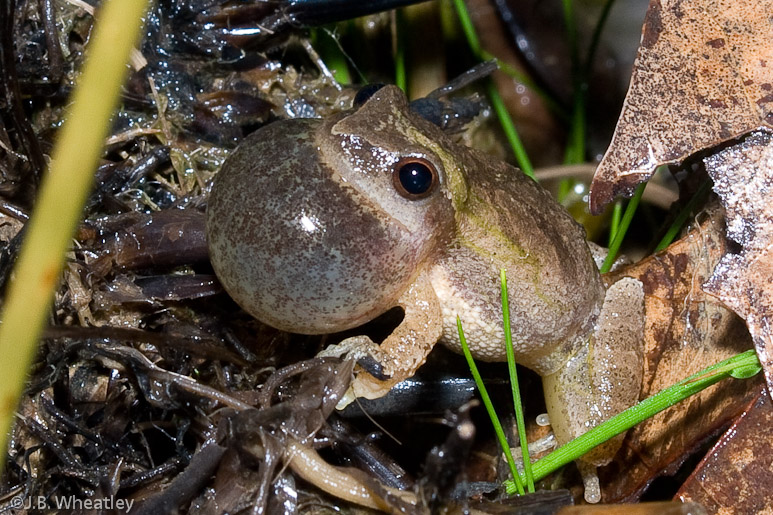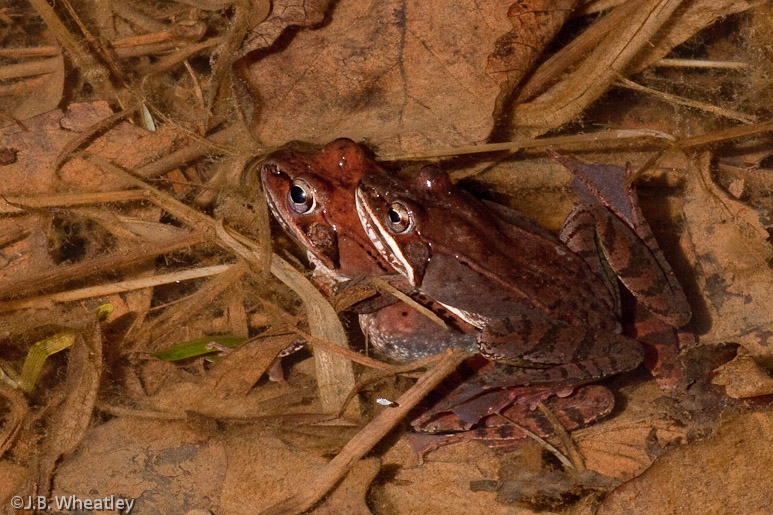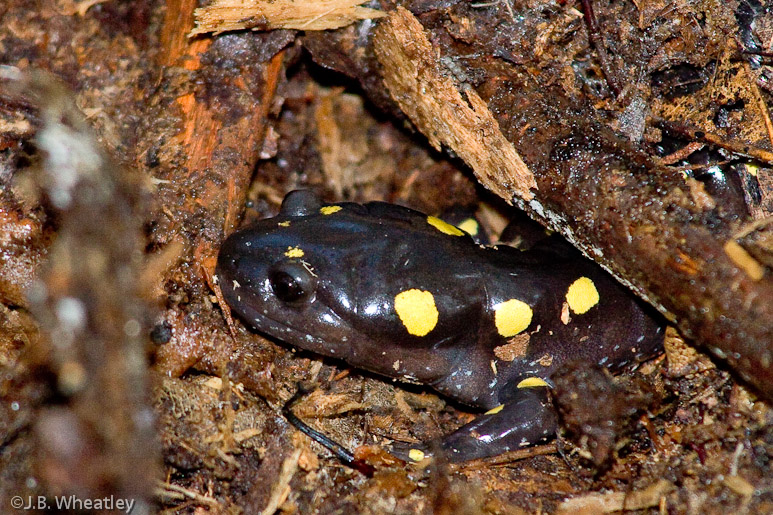Outdoors folks get excited, and rightly so, about vernal pools. Vernal, of course refers to springtime, and one of these fishless puddles, smack in the middle of a to-all-appearances-dead March woodland, apeep with Spring Peepers and percolating with lust-crazed Wood Frogs is one of the great marvels of our mountains and somewhat a blessed relief after a long winter.


Look closely into the water to see thousands of tiny, bright-colored fairy shrimp darting about “as sparks through stubble.” 1
Go out during a warm rain in early spring, and the pool will be writhing with mating Mole Salamanders (genus Ambystoma). We have three Mole Salamanders here in the mountains: Spotted (A. maculatum; Jefferson’s (A. jeffersonianum; and Marbled (A. opacum). 2
The Jeffs are the first out; I have seen them swimming under ice in late February. I don’t have a good picture of a Jefferson Salamander; this shot is courtesy of Mr. Gene Odato.
Then the Spotted, which in my region are by far the most common.

In the springtime, however, you will not find any Marbled Salamanders—at least not any adults. But if you fish around with a dipnet, you might come up with some larvae.
I’m pretty sure that this is a Marbled Salamander larvae—those spots along the side are not mentioned for either Jefferson’s or Spotted.
Can’t quite see the spots? This shot—as lousy a photograph as it is—shows the spots much more clearly. 3
Remember how I mentioned that the pools were fishless? That’s important. These little fellows are not particularly fast swimmers, and they would easily be wiped out by a couple of dozen bream or young bass. Hence, they only breed in temporary pools that don’t support fish.
Both of the larvae photos above were taken on 21 March 2008—five years ago. I have been trying to find an adult Marbled Salamander ever since.
The first thing to know is that Marbled Salamanders take a different approach to raising the kids. They breed in the autumn, laying their eggs under logs and rocks in dried-up vernal pools. The eggs will not hatch until the pools refill with water.4 The females will even guard the eggs for several weeks.
I have flipped a lot of rocks and logs looking for an adult. Five years–no joy. But this year, I asked a friend to look in a pool I didn’t have time to get out to. He didn’t have time either, but he asked a friend, who did have time, and he found them.
Suddenly, I did have time to go out to that pool. So did my friend, and we got some pictures.
I really didn’t want to uncover the ladies too long, so I grabbed these shots pretty quickly. 5
Not very exciting poses, but I think that is one cool critter. Note the eggs; the female will lay between fifty to a hundred eggs. 6
Why do the Marbled Salamanders lay their eggs in the fall, instead of in the spring like every other respectable Mole Salamander? Well, it’s a herp-eat-herp world out there, and young Marbled Salamanders eat the eggs and larvae of other amphibians. 7 By the time spring rolls around, the young Marbled will have already hatched and grown, placing them neatly at the top of the vernal pool food chain.
Why is the article titled Hurricane Sallies”? Well, the late summer and early autumn rains that can quickly fill the vernal pools in these mountains often (although certainly not always) come from the remnants of tropical storms passing up the east coast. The quicker the pools fill, the less time the eggs are at risk, and the more time the larvae will have to grow before the following spring. Ergo, to my untutored mind, the best years for Marbled Salamanders are years with hurricane activity.
Just a thought. I could be wrong.
- New American Bible, Wisdom 3:7
- There is a fourth Mole Salamander in Pennsylvania, the Eastern Tiger Salamander (A. tigrinum), but it is only found in the very southeast corner of the state.
- And just let that be a lesson to all you budding nature photographers. Good photographers will tell you to edit ruthlessly and discard everything but your best. That’s great advice for a photographer, not so much for a naturalist. It is often a good idea to keep shots that help to identify a specimen or record a particular behavior or even a posture. Okay, eventually you will need to buy a 2TB hard drive, but hey, you wanted to update your computer anyway, right?
- Usually this happens in the fall, however, the eggs have been known to even overwinter and hatch in the spring if the autumn is too dry to refill the pool.
- A gentleman does not leave a lady uncovered, no matter how many legs.
- But who’s counting? Seriously, who counts these things?
- For those not familiar with the jargon, a “herp” is any reptile or amphibian. It derives from the word herpetology, the study of…herps.
